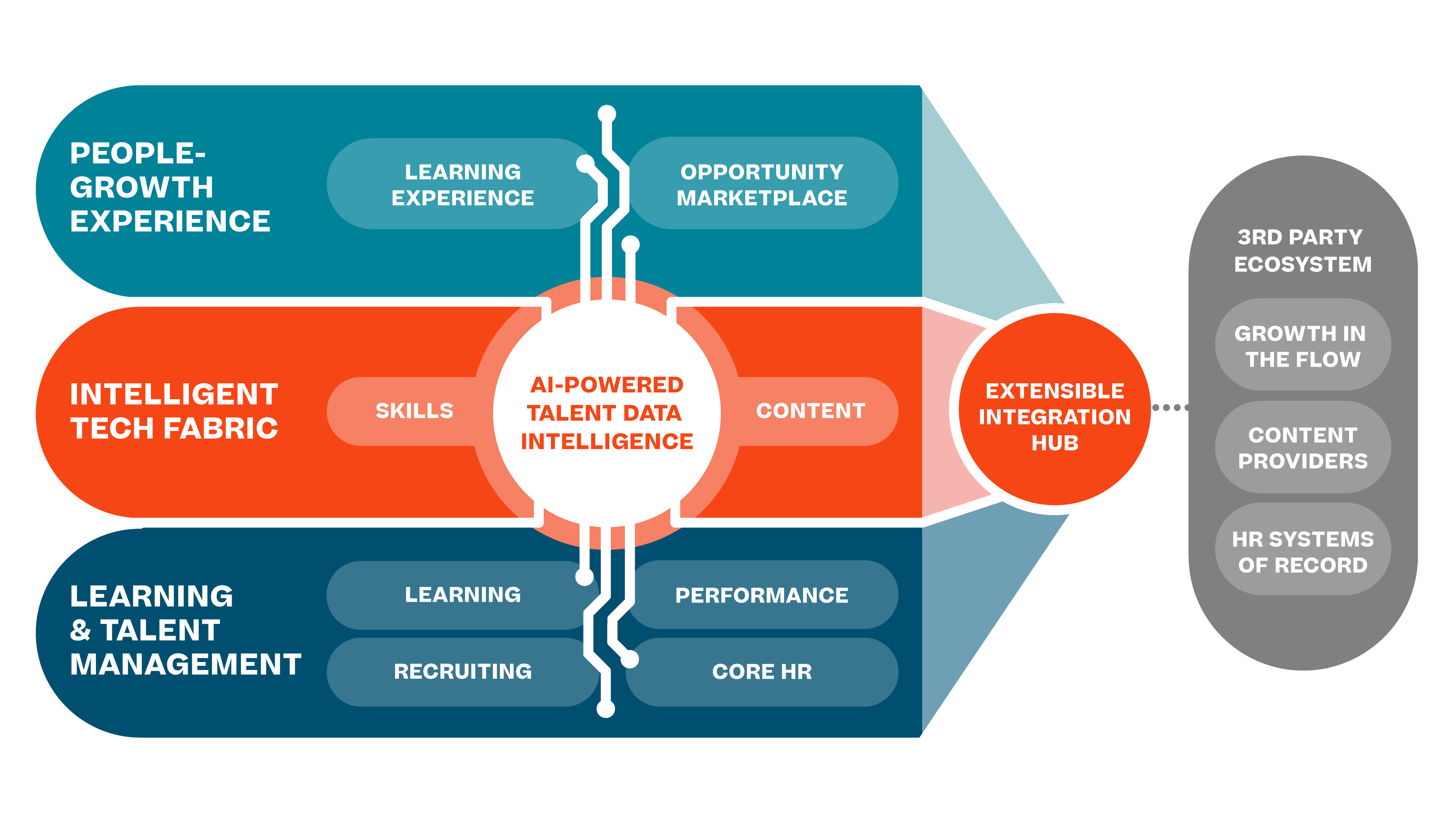Key Takeaways:
- The Learning Management System (LMS) primarily focuses on managing structured training and compliance, serving as a system of record for organizations.
- In contrast, the Learning Experience Platform (LXP) emphasizes personalized, learner-driven experiences that promote continuous skill development and collaboration, enabling users to access a variety of content tailored to their needs.
- The Talent Experience Platform (TXP) unites the capabilities of both LMS and LXP, along with talent management and intelligence solutions. It provides a holistic approach that empowers organizations to unlock employee potential, foster growth, and respond to the dynamic needs of the workforce.
- Cornerstone's TXP integrates extensive skill data and employs AI to personalize learning and development opportunities for employees.
The Utility of the LMS and LXP — and the Vision of the Cornerstone TXP
First, a very brief history.
For many years L&D teams debated the use of technology for training, with two basic camps: the true believers in face-to-face learning and the digital visionaries ready to adopt e-learning technology.

The LMS
Enter the learning management system (LMS). L&D teams could now use technology to manage in-person training sessions, including enrollments, instructions, and attendance. Eventually they could even assign e-learning — all from their LMS.
The L&D world became more and more familiar with using technology and tech jargon like SCORM became part of the common language.
As the name suggests, the focus of the LMS was “management.” L&D teams could use the LMS to manage and keep a record of all required training — especially important in highly regulated industries.
Today the LMS does much more, but compliance and robust learning administrator tools remain at the heart.
The LXP
The LMS was first developed to serve a top-down approach to learning — and, although it's evolved, the technology continues to help companies manage what the business requires. The learning experience platform (LXP), in contrast, centees the learner and choice.
The LXP provides highly personalized learning recommendations based on a learner’s goals. Through the power of AI and machine learning, it does all the heavy lifting of finding relevant and timely content and, through integrations, delivers it to learners in the apps they use most at work.
The LXP also centers the learner by enabling learning from and with others. Through social features, curation, and user-generated content tools, it facilitates learning from colleagues and sharing expertise and insights. The technology supports a learning culture at scale and across time zones.
The business reaps the rewards of centering the learner’s experience. Employees build key skills while documenting and sharing critical business knowledge. L&D teams save time and resources that would normally be spent on sourcing, curating, and delivering targeted content. The business gains resilience and agility because people are learning and evolving on the job — critically important in our world of rapid technological advances, complex regulatory environments, shifting consumer expectations, and supply chain disruptions.

Functional Differences between LMS and LXP
LMS
- The LMS is primarily for delivering programmatic, structured learning with tools that enable administrator efficiency and reporting. Organizations often use an LMS for standardized onboarding, health and safety, compliance, job training, seasonal training, and learning required as a component of change management.
- The LMS acts as a system of record for organizations that need proof of completed trainings and qualifications for accrediting or compliance bodies.
- Learning administrators look to the LMS for extensive catalogue management, learning formats, business rules for learning delivery and requirements, and certification and compliance reporting.
- The business challenges that an LMS solves for include training at scale, compliance and risk minimization, and time-to-productivity for new hires.
LXP
- The LXP is primarily designed for self-driven learning and continuous skill development in a consumer-grade experience. When users log in, they see personalized learning recommendations based on their skills and learning goals. Recommendations are updated daily as the system learns from the user’s behavior.
- In the LXP, learners access training, premium content, internal resources, socially shared knowledge and external web content in an experience tailored for them. Content ranges in duration from hours-long courses to articles that take a few minutes to read.
- The LXP has extensive social features and curation tools to support learning communities. The EdCast LXP also has extensive user-generated content tools that enable internal subject matter experts to share their knowledge with colleagues — thereby creating a repository of business knowledge that can be easily accessed and shared across the organization.
- The LXP meets users where they are at “in the flow of work.” This is done via integrations with commonly used work applications such as Slack, Microsoft Teams and Google — as well as a mobile app.
- The business challenges that an LXP solves for include employee growth, skill development for workforce reskilling and upskilling, information silos, and learning adoption and engagement.
The TXP
For us at Cornerstone, the is not any one product, but a vision. It’s a vision for how our products work together to empower talent leaders to unlock the limitless potential of their workforce and streamline the way they do it.
Cornerstone Galaxy brings together the LMS and LXP, but also talent management, talent intelligence and an Talent Marketplace to elevate growth and engagement opportunities for all and meet a business’s unique needs for resiliency in a rapidly changing, complex world.
We think of the TXP as having four layers.
- Learning and talent management: Foundational systems are critical to managing an organization’s talent and learning, delivering programs and scaling strategies. And efficiency is key — because less time administrating means more time focusing on the business transformation our world requires. Our portfolio of products for this layer includes learning management, performance management, recruiting, compensation, succession, core HR and extended enterprise, all designed to move your people and organization forward.
- People growth experience: People want opportunities for development, advancement and inclusion, so we deliver a holistic, user-centric people growth experience supported by an industry-defining talent management foundation. , access new career and project opportunities, and connect with or become mentors. Organizations have the right people contributing to critical cross-functional projects and find candidates for new roles faster — because they’re right inside the company. This is what EdCast and our Opportunity Marketplace provide.
- Intelligent tech fabric: We put skill ontologies, job architectures, content sources and people data from over 90 million users in a central data lake to provide more personalized and curated learning relevant to people’s goals and objectives. Then we use AI to enable organizations to see, match, automate, prescribe, predict and manage the supply and demand of skills to improve internal mobility and talent sourcing at scale. This is all part of our intelligent tech fabric, which includes our Cornerstone Skills Graph.
- Extensive integration hub: A future-proof, connect-to-anything architecture provides organizations the agility and scale they need to evolve. So, we’ve simplified integrations between our portfolio of products, and we’re building in more extensibility with APIs and microservices designed for the broader ecosystem.

The Final Word
The LMS is foundational and will continue to play an essential role in the management and distribution of required and prescribed knowledge, enabling organizations to meet workforce training goals and minimize risk. The LXP adds to the strength of this foundation by empowering the individual learner and tapping into an organization’s collective intelligence through collaborative learning and democratization of content curation and creation.
The Cornerstone TXP takes it even further. Our vision is to combine best-in-class learning, growth-centric talent tools, people data from over 90 million users, and the power of AI to help talent leaders drive transformational outcomes for people and organizations.


